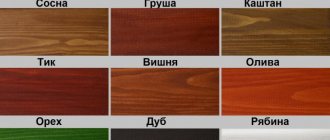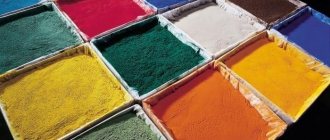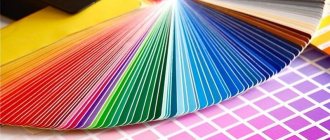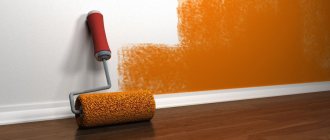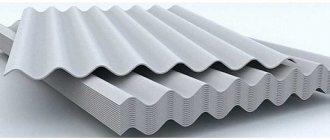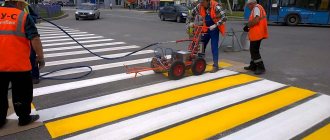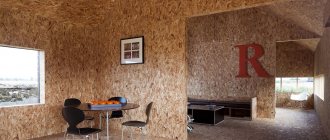The most durable coatings include hammer paints designed for painting metal surfaces. Back in Soviet times, they were used to protect factory equipment, laboratory devices, and various equipment used under adverse conditions. At that time, hammer coating was produced in one single shade – gray.
Over the years, the dye has gained popularity not only in the manufacturing sector; designers began to use it in interior design and exterior finishing work, and in landscape design. Thanks to increased demand, the palette of hammer paints has also expanded.
What is hammer paint for metal?
It turns out that this coating has a specific texture that cannot be confused with any other. The painted surface resembles the marks of hammer blows. This is what gave the paint its name. Sometimes it is also called blacksmith's.
In its production, epoxy, acrylic and alkyd-styrene bases are used. The hammer effect is achieved through auxiliary components - aluminum powder, silicone oil and fine glass.
It also contains special silicones that stabilize the texture and help repel water.
The resulting mixture has a liquid state with the highest degree of adhesion. After drying, a durable coating is formed, as the metal powder gives density to the material. Hammer paint is available in cans and cans.
Main characteristics and features of the coating
The results and characteristics of the paint composition may differ from one manufacturer to another, but for the most part, hammer paints have similar features:
- Alkyd resin is used for the binder.
- The density of the substance is 1 kg/l.
- The coating residue on the surface is 47%.
- Drying time parameters: at least two hours.
- If it is necessary to apply several layers, then each subsequent one is applied 5 hours after the previous one.
- Shelf life in containers is 2 years, provided all storage rules are followed.
- Gloss level indicators - 66.
- Withstands temperatures up to +80°C.
- To apply one layer, you need to use a liter of hammer dye per 10 m2.
Varieties
Hammer effect paint is divided into the following types:
- Nitroenamel "NTs-221" is considered the cheapest, since it serves only as a decorative coating. Therefore, it is used for interior work. It is afraid of high humidity and is susceptible to corrosion.
- Hammer enamel “ML-165” has an alkyd-styrene base. Withstands the highest temperatures, up to +130 degrees. Has a high degree of adhesion to any material. Used for external and internal work. Can be painted even over rust.
- Epoxy enamel “EP-1323” performs the function of a dye and a primer at the same time. It has thermal and anti-corrosion properties. Designed for cars, gates, artistic forging, etc.
- Hammerite enamel is considered the most expensive. Manufacturer – UK. When painting with it, an additional primer is applied. After drying, a film is formed that protects the metal from oxidation. Made from silicone additives and alkyd resins. Feature – it is not advisable to paint with a spray gun. Used everywhere, even on top of rust.
Advantages
Among the advantages of hammer paint:
- high degree of resistance to temperature changes;
- anti-corrosion;
- possibility of application directly to rust;
- quick drying, especially if the paint is aerosol;
- moisture resistance;
- reliable protection against rust for 8 years;
- coating strength;
- no toxic evaporation after drying;
- harmless to the body even when used indoors;
- large selection of colors;
- unusual decorative effect;
- repels dust and dirt;
- water-repellent properties;
- smoothing out surface irregularities;
- if there are chips, there is no need to remove the entire layer of paint; it is enough to cover it with enamel in the area of the defect;
- immunity to vibration, which is why hammer paint is used for cars;
- absence of unpleasant odors;
- Possibility of painting with different tools.
Flaws
There are also disadvantages, but they are few:
- high consumption and high cost;
- cannot be removed using solvent or tools with an abrasive surface;
- Difficult to apply with a spray gun.
Advantages and disadvantages of blacksmith paints
The main advantages of hammer coatings:
- Resistance to temperature changes.
- Enamel can be applied directly to rust, without the prior use of primers and converters.
- Hammer paint dries quickly.
- Resistant to moisture. Good hammer paints protect metal from corrosion in the open air for up to 8 years.
- Mechanical strength.
- No toxic fumes after drying (you can paint interior items).
- Excellent decorative properties. These coloring compositions have not only a wide palette of colors, but also high resistance to fading.
On a note! Dried hammer enamel has water-, dust- and dirt-repellent properties. Thanks to this, painted objects always look clean and tidy.
- The unusual texture of the coating hides minor irregularities in the surface being painted. If a chip is found somewhere, it can be painted over locally, and the area of touch-up will be invisible against the general background.
Hammer enamel is very popular due to its unusual appearance and many advantages.
Forge paint also has disadvantages:
- It is very difficult to remove from the surface with solvents and abrasive tools.
- If you leave unpainted areas, then corrosion from them will eventually spread to the coating itself.
- Thick enamel is difficult to apply with a spray gun.
- The paint is not cheap, and it costs quite a lot.
Area of use
- Forged products, decorative items made of cast iron.
- Metal doors, fencing, fences, gates.
- Cars and mechanisms – car parts, electrical panels, etc.
- Steel structures – such as weather vanes, pipes, beams, support structures, fastenings.
- Furniture – cabinets, safes, benches, etc.
- Decorative items - frames, fittings, artistic forging, equipment and much more.
- Production equipment, specialized devices, racks, shelves.
Materials: can be painted on wood, metal, glass, tiles, plastic.
Important! Hammer painting involves applying the mixture to a horizontal surface. Therefore, before painting a metal door, remove it from its hinges and lay it flat. Otherwise, the paint may form smudges. If this is not possible, you can purchase a quick-drying option. Pay special attention to this!
Painting a metal structure for stairs. Video
Coloring technology using various devices
| Tools | Where are they used? | Peculiarities | Dyeing technique |
| Brush | Small surfaces, complex reliefs, small details. | Natural bristles | Painting gates with hammer paint is carried out in three layers, as it is applied to a vertical surface. Horizontal surfaces are painted in two layers. Pay special attention to hard-to-reach places - paint completely. Otherwise, the remaining rust may destroy the structure of the dye. |
| Construction roller | Vast and flat surfaces. | A roller made of velor and fur, but with short pile. Foam rubber is excluded, since it is corroded by the solvents contained in the paint. | Roller painting involves applying two or three layers. For the first layer, the mixture must be diluted with a solvent composition in a ratio of 9:1. Before working with a roller, you need to go over hard-to-reach places and corners with a brush. |
| Aerosol can | Painting over chips and other defects. Artistic forging, painting of cars, spare parts and other small parts. | If defects are painted over, make sure the shade matches exactly. | Apply three or four layers. Each layer should be thin. The mixture in the can is shaken all the time, the application distance is at least 15 cm, maximum 20 cm. The time between applying layers should be: • after the first layer - 3 minutes; • after other layers – 20 minutes. |
| Pneumatic spray gun | Relief and flat surfaces. | Requires setup and painting skill. | Using a spray gun, the surface is painted in two or three layers, the first of which should be very thin. Before application, you need to dilute the mixture with solvent in a ratio of 2:1. The temperature during painting should not exceed +22 degrees and cannot be lower than +18. At lower temperatures, the enamel may take too long to dry. |
| Airless spray gun | Relief and flat surfaces. | Requires setup and painting skill. | Shake before use. Apply according to the previous method. |
Features of painting with blacksmith enamel
A few tips that will be useful to those who use this coating to paint metal or other materials with their own hands for the first time:
- Avoid working at aggressive temperatures. General recommendations: the temperature should not be below +10 degrees and above +30. It is better to stick to the golden mean - +20-25 degrees.
- To achieve a beautiful textured pattern, apply several layers. But remember that you need to strictly monitor the overall thickness. If the layers are excessively thick, the enamel will take too long to dry.
- Hammer enamel does not require the preliminary application of putty and primer. The fact is that it is made in such a way that it can even be applied to rust. And the primer is already included.
- Irregularities, small cracks and scratches do not need to be covered up. The enamel itself will hide this.
- It is advisable to paint metal structures using a roller. The fact is that spray guns do not provide the desired texture, so they are better used for surfaces that do not require the creation of a relief pattern.
- The application technique is not always the same. This is due to the coloring of different materials and the degree of their damage.
- It is prohibited to use blacksmith enamel on surfaces containing bitumen. Glossy materials must be roughened before painting.
- When painting wood materials, treat the surface with water-based acrylic primer. This will prevent the enamel from penetrating into the wood pores.
- If you decide to treat a new metal surface, be sure to wash off the factory grease using greasy solvents and acetone. You can check for the presence of grease residues using filter paper that is applied to the metal.
- If grease stains appear, it means that the surface is not completely cleaned.
- If the metal is smooth, use a wire brush for sanding. This is necessary for better adhesion.
Painting gates without removal. Video
Use in advertising and interior design
Hammer enamel is often used in advertising. It is used to make signs and apply them to outdoor advertising banners, since the paint does not fade over time. In interiors, it is often used to paint individual elements, that is, to make accents. The aging effect, texture, and metallic shine of the coating are used in Provence, high-tech, and loft styles. Forged stair railings are painted.
Tips for painting metals (2 videos)
Different brands of paint and hammer effect (35 photos)
How to paint a car
How to paint flat surfaces is quite clear, but how to apply paint to a car? First of all, you need to prepare tools and materials:
- directly hammer enamel;
- short-haired roller or spray;
- solvent No. 647;
- enamel primer;
- abrasive material.
Attention! Prepare all the necessary items in advance; they should be nearby, as they may be needed at any moment. The enamel dries very quickly, so there is no delay in working with it.
Although blacksmith paint does not require preliminary priming, experts still recommend doing this to achieve the highest quality of painting.
Stages of staining:
- Clean the parts and vehicle from dirt and dust.
- Degrease surfaces with special solutions.
- If there is severe rust, get rid of it. To do this you will need abrasive paper (sandpaper). Even if there is no rust, still use sandpaper, since the enamel adheres better to a rough surface, plus adhesion increases.
- A rust converter can be used to remove large areas of corrosion. If you bought Hammerite enamel, then don't worry about corrosion. Because paint contains substances that coat rust.
- Treat the surfaces with primer-enamel, which must first be diluted.
- Now pour the paint into a construction ditch and dip the roller into it. When it is soaked, roll it over the ribbed surface of the cuvette. Or get your spray gun ready for use.
- Then you can paint large surfaces. After applying the first coat, wait 30 minutes before applying the second coat.
Complete drying of the mixture is achieved after seven hours, but it is permissible to operate the machine only after three days. You can cover the last layer with regular varnish. This will improve the decorative qualities of the painted surface.
Important! The glossy coating of the car must be removed - the paint does not adhere to such a surface, only to a matte one.
Is it possible to make blacksmith enamel at home?
Since this enamel has a high cost, enterprising owners figured out how to make paint at home. If you want to benefit from their expertise, you need to prepare the following tools and components in percentage:
- UVL-1 varnish: 96.8%;
- metal shavings from aluminum – up to 6% maximum; 0.5% soot;
- silicone oil;
- capacity;
- construction mixer or electric drill with an attachment for stirring solutions;
- latex gloves.
Soot contributes to the formation of shade and relief, but the hammer effect is achieved through aluminum shavings. Silicone oil is necessary to form the hard particles that make up the texture of the enamel.
Manufacturing Features
Oil enamels are mixed in a warm room. It is advisable to do this in a specialized painting chamber. Combine all ingredients except silicone oil, it is added at the end of mixing.
First, stir the mixture with a wooden stick, spatula or other tool. Now mix with a mixer until the chips become a homogeneous mass. That is, it should not float to the surface of the solution.
To change the shade, you can add enamel of any color, but remember, it should not exceed 30% of the total mass. Dilute the resulting mixture with silicone oil in the amount of 5-8 drops.
Whatever method you choose: ready-made paint or homemade paint, you will get an interesting textured surface in an industrial style.
How a metal entrance door can be painted can be done in a special article. We also recommend looking at special compounds, such as anti-vandal coating for walls.
Types and composition
The most significant characteristics of hammer paints are provided by the epoxy and alkyd substances that make up their base. Other components included are metal pigments and silicone resins. In a single “commonwealth”, these elements give the composition amazing durability.
The paint is applied very easily and adheres tightly to the surface being treated. The listed ingredients significantly increase the density of the dye and provide it with a unique ability to resist corrosion.
Additional strength to the paintwork comes from fillers.
The most important and useful of them are:
- aluminum powder;
- fine glass.
Fillers affect the durability of the applied layer and increase adhesion. However, the most important merit of these components is that they provide a unique texture. It is the fillers that create the effect of hand-chasing metal.
The unique type of dye makes it possible to hide surface imperfections. After painting, chips and shells, deep scratches and small cracks become invisible.
Additives in the form of silicones and aluminum flakes affect the ability to reject moisture and improve the structure. Technical wax is needed as part of the dye to obtain a protective surface film.
Hammer paints are not available in powder form like some other types. It is impossible to prepare a complex composition at home.
For this reason, liquid mixtures that are completely ready for use go on sale. Paints can be spray cans or be in traditional containers - metal cans. Large volumes are packaged in plastic buckets.
The components included may vary from manufacturer to manufacturer. This is how certain characteristics are achieved, mainly aesthetic ones - dullness or gloss.
